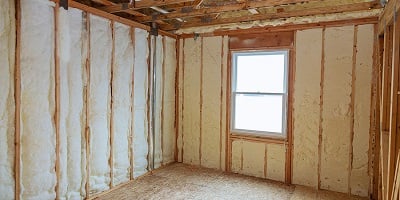Keep Out Winter’s Cold
Attic insulation helps to keep a home warmer in the winter and cooler in the summer. Most homeowners don’t want to pay to have their HVAC system work overtime to heat and cool the great outdoors, making attic insulation necessary. Some types of insulation are better than others depending on the geographic area and climate, but insulation in general will result in a noticeable difference in any home's interior climate. Insulation works by trapping pockets of air to slow down the movement of heat escaping the house in the winter or entering in the summer. An “R-value” is assigned to all insulation to rate how well it slows the heat transfer. The higher the number, the better.
Why Do I Need Attic Insulation?
Attic insulation is essential because most of the hot and cold air that enters a home is through the roof; ironically, this is also the main way in which hot and cool interior air departs a home. Investing in high quality heating and air conditioning systems to maintain temperature control is important, but without proper insulation, it will be very difficult to maintain a comfortable interior environment. Homes that already have attic insulation can be vulnerable as well. It is estimated that 90 percent of single-family homes are under-insulated, and this number could rise for homes built prior to 1960. One sign of poor attic insulation is icicles hanging from the rooftop in winter.
Working the HVAC System Overtime
Energy bills can be high -- even with proper insulation -- during the peak of the winter season when furnaces, heat pumps and other heating systems are running to keep homes warm. However, energy bills will skyrocket without adequate attic insulation. According to the Department of Energy, properly installed attic insulation can reduce your heating bill by 10 to 50 percent, and it works the same way in warmer months by lowering your cooling bill. This adds up to around $200 in savings per year and could be more in colder parts of the country. Depending on the size of the home, attic insulation can pay for itself over just a few years.
As heat escapes from a home (or cool air in the summer), the furnace, boiler or other heat source must work overtime to maintain the temperature set on the thermostat. A couple years of working overtime will lead to breakdowns, costly HVAC system repairs, and reduced longevity for heating and cooling units. It adds up to substantially higher costs than investing in good attic insulation.
There are more great benefits to proper attic insulation as well:
- Keeps a home warmer in winter and cooler in summer
- Saves on monthly energy costs
- Reduces energy consumption and is more eco-friendly
- Reduces greenhouse gases
- Provides an effective buffer between a home’s interior and the outer elements (i.e. strong winds)
- Limits wear and tear on HVAC systems
- Provides good soundproofing qualities
- Increases a home’s marketing value
Installing Attic Insulation
To get started, it’s important to understand the various types of insulation and which is best for your climate and environment. The best insulation for a house in Maine may not be the best for a home in southern Florida or the southwest. Fiberglass insulation is very popular. Read more about it here.
When installing, look to FASCO® (a member of the BECK Group) staplers for quality and efficiency in your attic insulation installation. With a variety of insulation staplers available, FASCO® tools will help you make quick work of your insulation project so you can enjoy a warm and cozy winter.
.svg.png)


